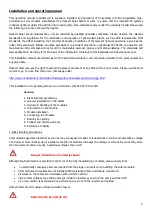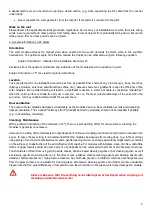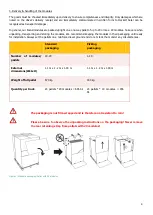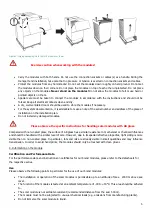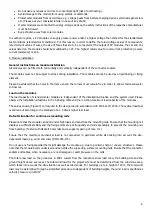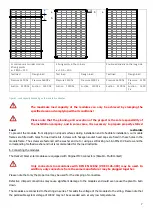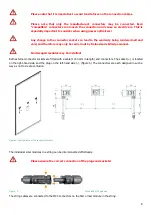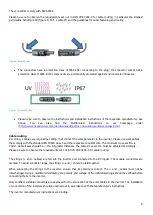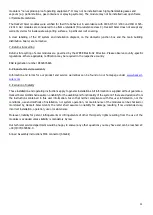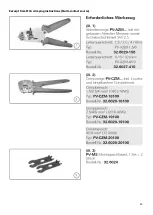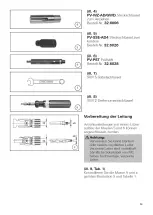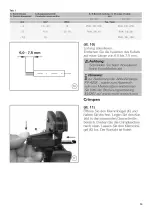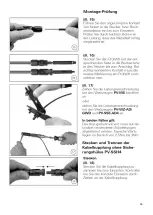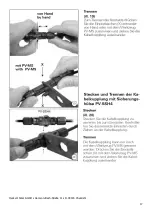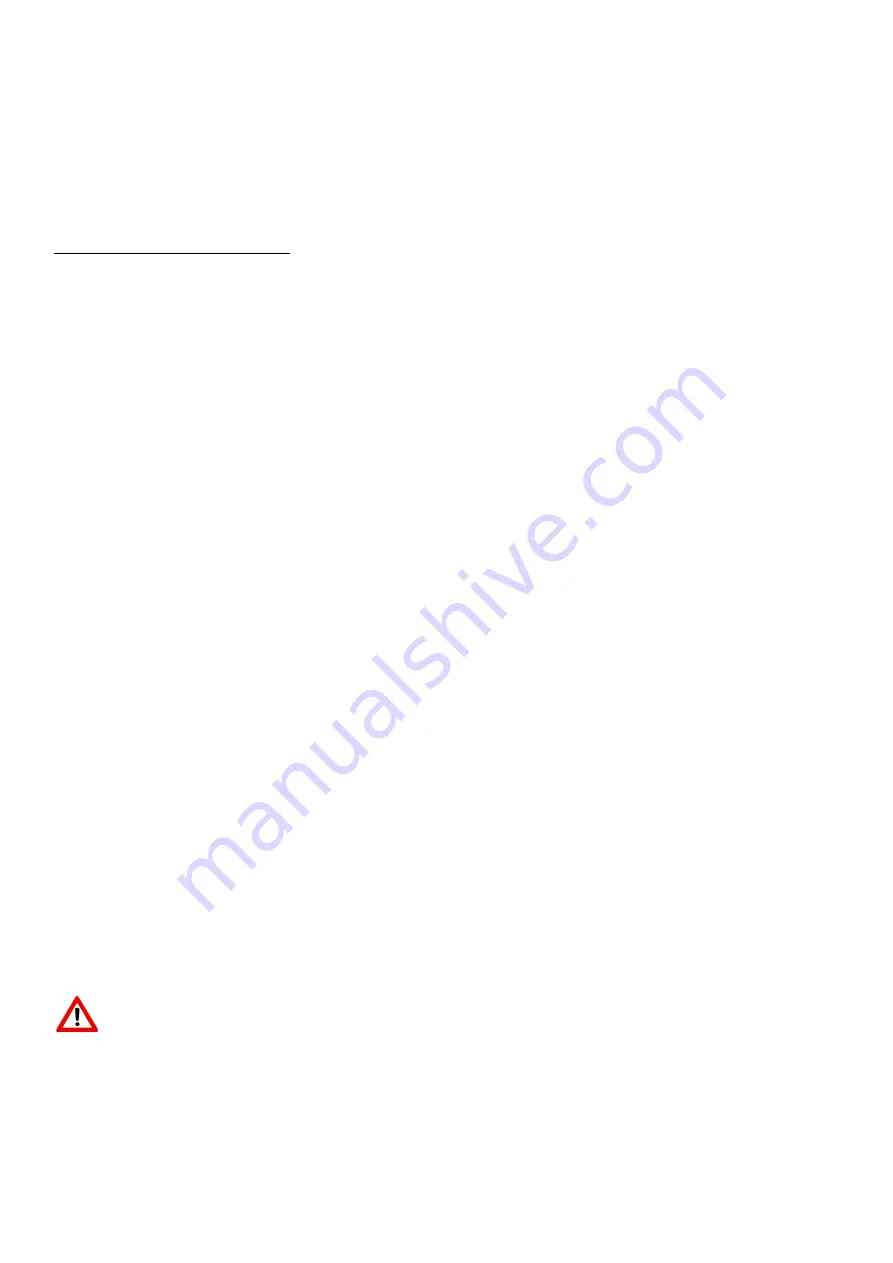
3
A deadly electric arc can result when opening a closed section (e.g. when separating the DC cable from the inverter
under load):
Never separate the solar generator from the invertor if the latter is connected to the grid!
Work on the roof
Please observe the applicable accident prevention regulations. Do not carry out installation work when there are strong
winds. Secure yourself and other persons from falling down. Prevent objects from potentially falling down. Secure the
work area so that no other persons can be injured.
2. General information on PV plants
Orientation
The solar module achieves the highest yield when oriented to the south (towards the North when in the southern
hemisphere). The optimum angle of inclination outside the tropics can be estimated using the following equation:
Angle of inclination = latitude of the installation site minus 20.
Deviations from the optimum orientation and inclination of the modules lead to a reduction in yield.
Angle of inclination >75° may lead to regional restrictions.
Location
The area planned for the installation should be as free as possible from shade of any kind (houses, trees, branches,
chimneys, dormers, antennas, satellite dishes, cables, etc.), because shade can significantly reduce the efficiency of the
solar modules. Even partial shading will lead to a significant reduction in yield. A module is considered “shade-free”
when the entire surface is shade-free all year round and, even on the most unfavourable days of the year when the
sun is low, receives unobstructed sunlight for several hours.
Rear ventilation
The output of solar modules decreases considerably as the modules heat up. Rear ventilation avoids yield-impairing
heat accumulation. The so-called “chimney effect” (draught behind the modules) should not be impeded if possible
(e.g. roof windows, collectors).
Cleaning/ Maintenance
With a sufficient inclination of the modules (>15°), there is a self-cleaning effect for rain and snow. Cleaning the
modules is generally unnecessary.
However, the soiling of the modules is strongly dependent on the surrounding environment and should be checked once
a year. In case of heavy soiling, it is recommended that the modules be cleaned after cooling down (e.g. in the morning)
using plenty of warm, de-mineralised water and a gentle cleaning device, as sharp-edged items might lead to scratches
on the surface or to destruction of the anti-reflective (AR) coating. For modules with AR glass, clean, lint-free, microfibre
cloths or paper towels should be used. Fatty or oily deposits can be removed with alcohol or alcohol-water mixtures.
You should also refrain from using strong acids, alkalis, benzine-based cleaning agents or hot cleaning agents, as well
as cleaning agents containing silicone oil, fluorides or wax, polishes, alkaline cleaning agents and cleaning agents with
abrasive chemical products or high-pressure cleaners. Any methods, means or conditions which can exchange Na ions
from the glass surface are unsuitable for cleaning glass. All abrasive cleaning agents and utensils are also unsuitable.
Please note that too great differences in temperature can lead to tension in the glass, which may damage the module.
Please make sure that the earthing is not interrupted or destroyed when carrying out
cleaning and maintenance work!
Содержание NeMo 3.0
Страница 1: ...Installation and operating manual www heckert solar com Status 08 2021...
Страница 12: ...12 Excerpt from MC4 crimping instructions Multi contact source...
Страница 13: ...13...
Страница 14: ...14...
Страница 15: ...15...
Страница 16: ...16...
Страница 17: ...17 Heckert Solar GmbH Carl von Bach Stra e 11 D 09116 Chemnitz...


